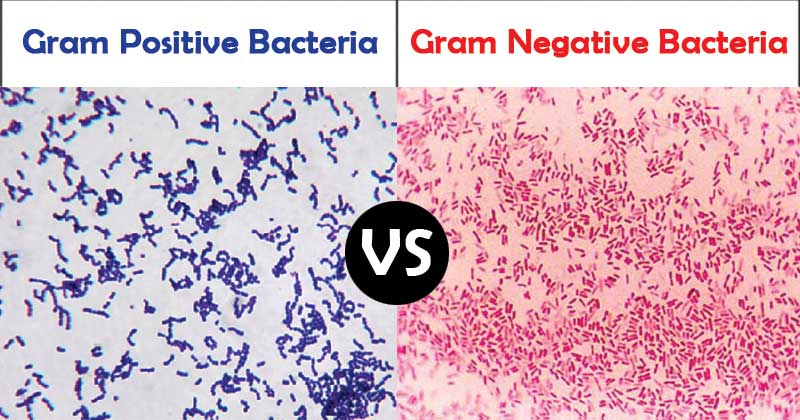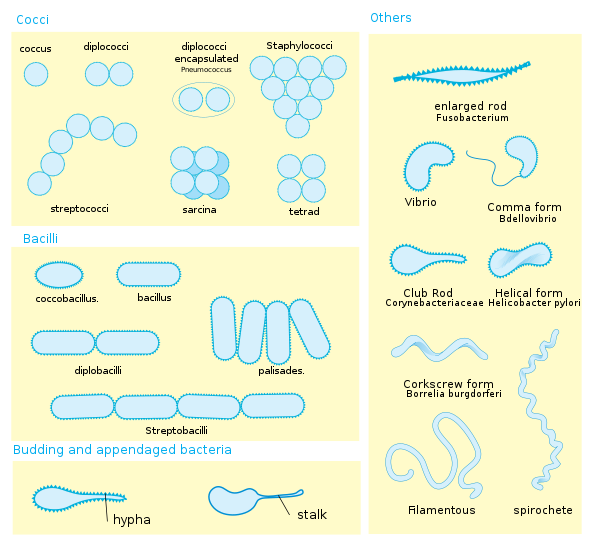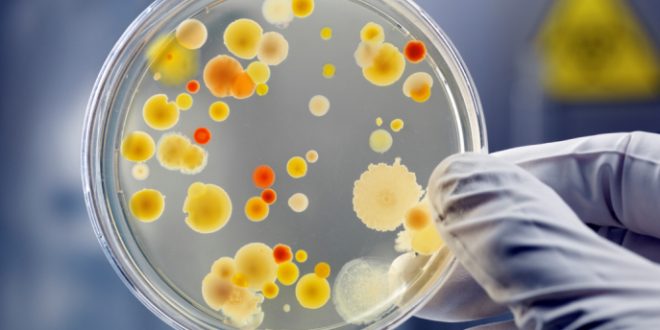We all agree that classification and taxonomy of organisms are desirable and necessary in cases of biological work. But, there is much disagreement as to the best method of classifying and naming living things. The zoologists and the botanists have arranged matters in their fields fairly satisfactorily, largely on the basis of morphological character based on the good availability of long, connected and demonstrable history of evolutionary development and phylogenetic relationships. But, the microbiologists can only speculate as to the evolutionary and phylogenetic history of microorganisms; because virtually nothing is known of them. Hence, they have not arrived at systems of classification in which the natural relations of the microorganisms are used as a basis.
Development of Bacterial Classification
Nevertheless, the microbiologists have made classifications of bacteria and other micro living beings. These classifications have been built up largely as arbitrary descriptive keys for identification of organisms according to whatever information about them may available. These descriptive keys cannot properly be called natural classification. They are indispensable, but their artificial and entirely arbitrary nature must not be forgotten.
Bacteria may be arranged in systematics groups, called taxa, according to shape, motility, form, spore formation, growth under certain absolute conditions such as complete lack of oxygen (anaerobiosis) or other criteria. These characters are qualitative and unit characters. They are most useful in classification because they are not relative and variable like size or rate of growth. They are present or not present.
Good to know
- For laboratory purposes, method of classification based on morphology and chemistry is the best practical way.
- Though morphological groupings provide little information about the evolutionary history of bacteria, they provide very valuable information for the diagnosis and treatment of bacterial infections.
- The morphological features, including the shape and colour of bacterial colonies, are not always constant and can be influenced by environmental conditions.
A definitive identification scheme for bacteria was first presented in 1984 in Bergey’s ‘Manual of Systematic Bacteriology’. In this scheme, bacteria are classified on the basis of many characteristics. Cell shape, nature of multicell aggregates, motility, formation of spores, and reaction to the Gram stain are important.
Classification of Bacteria
Bacteria can be classified into various categories based on their features and characteristics. The classification of bacteria is mainly based on the following:
- Composition of the cell wall
- Shape
- Flagella
- Mode of respiration
- Mode of nutrition
Based on Composition of Cell Wall
The nature of the bacterial cell wall serves as the major determinant for identifying the two primary morphological groups: Gram-negative bacteria and Gram-positive bacteria. These groups differ based on the thickness of the peptidoglycan layer in the cell wall and are easily distinguished under a microscope.

Gram-negative bacteria: Gram-negative bacteria have only a thin peptidoglycan layer in their cells walls. As a result, since their cell walls are readily penetrated by solvent that removes purple dye utilized during Gram staining, they appear light pink in colour. There are a number of different kinds of Gram-negative bacteria, many of which are pathogenic in humans, including E. coli, Salmonella, and Yersinia.
Gram-positive bacteria: Gram-positive bacteria are distinguished from Gram-negative organisms by the thick peptidoglycan layer in their cell walls. Dye that enters the cells during Gram staining is retained after treatment with a solvent, which is unable to penetrate through the cell wall to remove the stain. As a result, Gram-positive bacteria are purple in colour when viewed under the microscope following staining. Examples of important groups of Gram-positive organisms include Lactobacillus, Staphylococcus, and Streptococcus.
Gram-negative and Gram-positive bacteria are frequently described as being either spherically shaped or rod-shaped. This distinction is used to further categorize the organisms within their respective Gram groups.
Remember, you can’t write gram with a small ‘g’ here as it is named after a scientist Hans Christian Gram.
Based on Shape of Bacteria
Bacillus: (Latin bacillus means ‘stick) The term bacillus has been applied in a general sense to all cylindrical or rod-like bacteria. The largest species are about 2 μm across by 7 μm long and frequently occur in chains. They usually live in solitary but may form groups usually with end to end attachment. e.g. Escherichia coli, Bacillus spp. etc.
(Do not mix Bacillus with Bacillus. Bacillus indicates a non-taxonomic group of rod shaped bacteria whereas Bacillus denotes a genus of rod shaped, gram positive bacteria under the phylum Firmicutes and class Bacilli. The real problem here is the plural form of Bacillus and the class under which genus Bacillus is present are same i.e. Bacilli. Here, one distinction could be like this: the class name Bacilli always starts with a capital ‘B’.)
Spirilla or spirochete: They are longer, slender, unbranched and spiral shaped bacteria. e.g. Spirillum volutans.

Coccus (pl. cocci): Sphere or oval shaped. On the basis of arrangement of individual organisms, they can be classified as following:
- Monococci: Cocci living as singles. e.g. Monococcus.
- Diplococci: Cocci in pairs. e.g Streptococcus pneumoniae.
- Staphylococci: Cocci in clusters. e.g. Staphylococcus aureus.
- Streptococci: Cocci in chains. e.g. Streptococcus pyogenes.
- Tetrad: Cocci in group of four. e.g. Micrococcus.
- Sarcina: Cocci in group of eight.
Vibrio: Comma shaped. e.g. Vibrio cholerae.
Based on Flagellar Presence & Arrangement
Flagella (sin. flagellum) is a whip-like structure generally protruding from the cellular boundary of some cells. They are deep down made of flagellin named protein and are used for locomotive purposes. Besides, some flagella do the function of sensing, thus helping the cellular organism or the cell to perceive the environment.
Based on their presence and arrangement, bacteria are classified as the following:
Aflagellate: Bacteria without any flagella. e.g. Shigella spp.
Flagellate: Bacteria with flagella.
- Monotrichous: Have single flagellum. e.g. Vibrio cholerae.
- Lophotrichous: Have multiple flagella located in the same place. This help the bacterium to move at a certain direction with good speed. e.g. Pseudomonas fluorescens.
- Amphitrichous: Have two flagella at two opposite ends of the body. Depending on which one is active, the bacterium can move in the desired direction. e.g. Rhodospirillum rubrum (helps in fermenting alcohol)
- Peritrichous: Have flagella projecting from all directions. e.g. E. coli.
Based on Spore-forming Ability
Spore forming: Bacillus spp.
Non spore-forming: Escherichia coli.
Based on Nutrition
Autotrophic bacteria: Can prepare their own food. They usually take inorganic materials from the environment and then produce food from them performing different reactions. They can be of two types:
- Photoautotrophes: Use light energy to make food. e.g. Cyanobacteria.
- Chemoautotrophes: Use chemical energy to make food. e.g. Beggiatoa, Thiobacillus.
Heterotrophic bacteria: Can not prepare their own food as opposed to autotrophs, so either saprophytic, symbionts or disease causing parasitic. e.g. All disease causing bacteria.
Based on Mode of Respiration
Anaerobic bacteria: Do not require oxygen for respiration. e.g. Actinomyces. Some of the anaerobic bacteria are found in the gastrointestinal tract of human body.
Aerobic bacteria: Needs oxygen for respiration and survival. They produce more energy than the anaerobes. e.g. Mycobacterium.
Note for Readers: This article has been written following different materials. It may not include all the necessary classifications. Please, notify us through this article’s comment box if we need to add extra info or classification here. Thanks in Advance.
References
- Autotrophic Bacteria from Byjus.
- Bacillus (shape) from Wikipedia.
- Bacillus from Wikipedia.
- Bacteria and Viruses with the edition by Kara Rogers.
- Fundamentals of Microbiology by Martin Frobisher.
Revised by
- Abulais Shomrat on 8th July, 2021.
- Khaleda Akter Shompa on 14th July, 2021.
 Plantlet The Blogging Platform of Department of Botany, University of Dhaka
Plantlet The Blogging Platform of Department of Botany, University of Dhaka






It’s a sensational presentation of Bacteria.I have read along with it’s a complete lecture regarding Bacterial Classification.
But I would say it will be best if you add some information about flagellate Bacteria.
Thanks for your concern . We will take necessary steps as soon as possible on the subject you have pointed out.